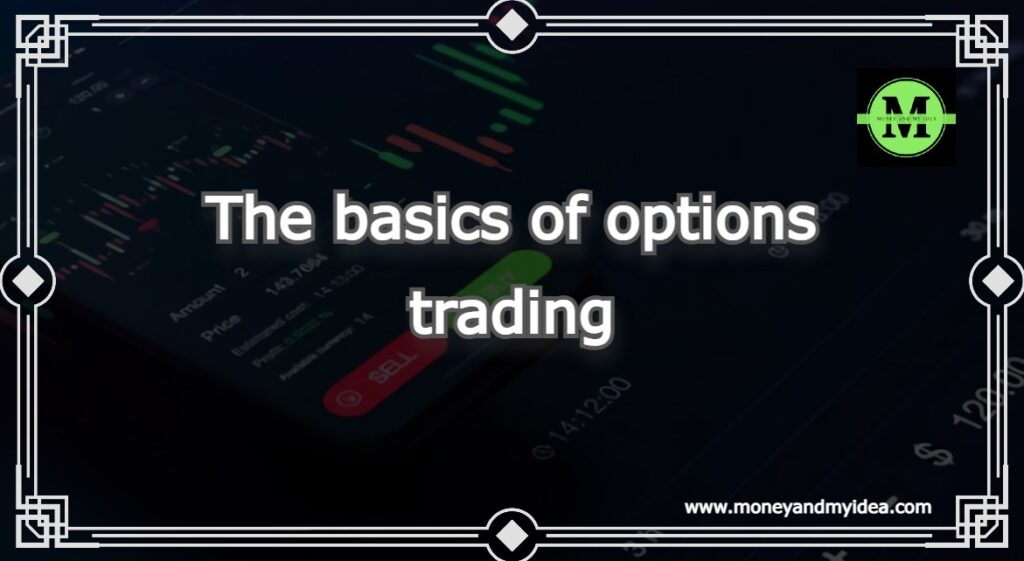Options are contracts that allow you to buy securities at a later date at a predetermined price. For example, if XYZ stock costs $100 today, someone might sell you an options contract that says you can buy XYZ one month from now at $100 per share.
Table of Contents
ToggleWhat are Options?
Options are contracts that give investors the right, but not the obligation, to buy or sell an asset like shares of a company stock.
Purchasers can buy or sell by a certain date at a set price, while sellers have to deliver the underlying asset. Investors can use options if they think an asset’s price will go up or down or to offset risk elsewhere in their portfolio.
Options are contracts that allow you to buy securities at a later date at a predetermined price.
For example, if XYZ stock costs $100 today, someone might sell you an options contract that says you can buy XYZ one month from now at $100 per share.
If you buy this options contract and XYZ’s price jumps to $140 in a month, you can buy the stock for a low price of $100—this means your profit is $40. Of course, this is an oversimplification, but this is essentially how options work—you predict where the price is going and buy a contract that allows you to sell high or buy low in the future.


Types of Options
There are two main kinds of options contracts—a bullish one and a bearish one. Essentially, put-and-call options allow you to either sell or buy the underlying security at a later date at a predetermined price.
What Are Calls and Puts?
When purchased, call options give investors the right to buy an asset. Call buyers are essentially giving up some profit in exchange for the lower risk of not owning an asset outright, since the price of the asset can potentially fall.
Say, for example, an investor thinks that the stock of Company X, which is trading at $100 a share, will climb to $120 a share. He could buy call options that give him or her the choice of buying the shares at a later date should they reach that price.
If the stock fails to reach $120 by the specified time frame, investors would lose the amount of money they spent on the premium but also be less exposed to the risk of the share price declining.
Meanwhile, puts are options that give investors the right to sell an asset. Investors pay a premium and are more likely to be protected against losses in case the price of the asset falls.


What Is the Put-Call Ratio?
A stock’s put-call ratio — or the number of put options traded in the market relative to calls — is one measure that investors look at to determine sentiment toward the shares.
A high put-call ratio indicates bearish sentiment, whereas a low one signals more bullish investor views.
Options are considered financial derivatives because they’re tied to an underlying asset. Stock options are common examples of the contracts and are based on the shares of a single company.
Meanwhile, ETF options are contracts that give the right to buy or sell shares of an exchange-traded fund.
A stock option typically represents 100 shares of the underlying stock. Other types of derivatives include futures, swaps, and forwards. Options that exist for futures contracts, such as S&P 500 or oil futures, are also popular among traders and investors.
See more post
Common Phrases in Options Trading
In order to trade options, investors need to know the strike price, the level at which the option holder can exercise the contract. In a trade, the option seller is obliged to deliver the promised shares if the buyer decides to exercise the option.
Options can be “in the money,” “at the money” or “out of the money.” For calls, if the shares of the underlying stock are higher than the strike price, then the options are considered “in the money.” For puts, options are in the money when the shares are trading below the strike price.
“At the money” is when the options strike price is equal to the price of the asset in the market. Contracts that are at the money tend to see more volume or trading activity, as investors are looking to exercise the options.
“Out of the money” is when the security’s price is below a call option’s strike price or above a put option’s strike level. For example, if shares are trading at $50 each and the call option’s strike price is at $60, the contracts are out of the money.
With put contracts, if the shares are trading at $50 but the contract’s strike price is $40, then the options are out of the money.
These options tend to be cheaper since there’s less of a possibility that investors will be able to exercise them. If the strike prices are significantly above or below from where market prices are, traders and investors often refer to the contracts as ”deep out of the money.”


Important Concepts in Options Trading
Another concept that investors need to understand about an option is its expiration, or the date by which the contract needs to be exercised.
The closer an option is to its expiration, the lower the value of the contract. The length of time before the option’s expiration typically ranges from one day to nine months, although longer-term contracts exist as well.
While expiration dates that are one month to three months away have historically been popular, shorter-term contracts, such as weeklies and dailies, have gained in popularity in recent years as more exchanges have listed them and investors have been drawn to the potential short-term profits they can generate.
Premiums are the cost of the options. The Black Scholes model is the mathematical formula for determining the price of options.
The model takes into account factors such as the price of the underlying stock, the option’s strike price, the time before expiration, the stock’s volatility and interest rates.
Investors also look at a stock’s implied volatility, which is the expected volatility of the stock in the future based on the prices of its options.


What Are “The Greeks” in Options Trading?
Traders use a range of figures known as “The Greeks” to gauge the value of options:
- Delta is the measure of the impact of the price of the underlying asset on the option’s value.
- Beta is how much a single stock moves relative to the overall equity market.
- Gamma tracks the sensitivity of an option’s Delta.
- Theta is the sensitivity of the option to time.
- Vega is the sensitivity of the option to implied volatility.
- Rho is the sensitivity of the option to interest rates.
Pros of Options Trading
Options trading is complex and involves risks, but once investors understand the fundamentals of the contracts and how to trade them, options can be an important tool to make investments while putting up only a premium.
In other words, the options market can give investors the exposure that they want without having to own the asset or security outright.
Options can also be an important way to protect a portfolio. Some investors offset risk for a company stock with options for an exchange-traded fund that gives broader exposure.
For instance, an investor with a big position in a bank stock can also hold puts for an ETF that gives exposure to a broad swath of financial companies.
If the price of the bank stock falls after bearish news for the financial industry hits the market, the investor can sell the put options for the ETF and therefore mitigate some of the losses incurred from the bank stock.
The practice of selling options to collect income can also be a way for investors who are seeking income to collect premiums consistently.
This was a popular strategy particularly in the years leading up to 2020 as the stock market tended to be quiet and interest rates were low, pushing investors to seek alternative sources of income.


Cons of Options Trading
Expirations are a risk in options. Securities like stocks don’t have expirations, but options contracts can expire without getting exercised by their buyer. While premium costs are generally low, they can still add up if options are used strategically by an investor.
This is why it’s important for an investor to understand the concept of time decay and how the value of an option decays as its expiration date approaches.
Another risk that options investors face is liquidity. Because options are either calls or puts and often have multiple different strike prices as well as expirations that can range from one week to years, there are many contracts that are outstanding in the market.
The plethora of different types of options contracts means investors may encounter issues with liquidity, or the ease with which they can be traded without moving prices. One way to try to measure this for an option is to look up its open interest. Open interest is the number of contracts that exist for an option.
For instance, an option that gives investors the right to sell a stock in three months may be easy to find and trade in the market, because investors commonly utilize them.
Meanwhile, there may be few contracts in the market that give investors the right to sell in a year, meaning trading those options is more likely to move their premiums.
Types of Options Trades
While simply buying a call or put is one way to trade in the options market, there are also multiple strategies involving the contracts that investors often employ.
Covered calls: A trade in which an investor sells bullish calls while also owning the underlying security. The selling of options helps the investor generate an additional stream of income while running the risk of having to deliver the shares they own if the security rises and the strike price is triggered.
An investor might do this trade when it seems there’s not much upside left in the security they hold.
Spreads: These trades involve buying or selling and equal number of options for the same underlying asset but at different strikes or expirations. Horizontal spreads involve different strike prices, while vertical spreads use different expiration dates.
Straddles and Strangles: These allow investors to profit from a potential big move in the asset, rather than the direction of the move. In a straddle, an investor buys both bullish calls and bearish puts with the same strike prices and expiration dates.
The investor would pocket a profit if the asset price posts a big move, regardless of whether it rises or falls. In a strangle, the investors also buys both calls and puts but with different strike prices.












